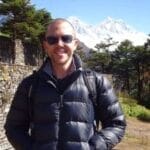Annapurna Circuit Trek The Ultimate Long Distance Trekking Experience in Nepal
Contents
Since opening to foreigners in 1977, this trek has been praised as the holy grail of trekking. This 200km-plus trail circles the stunning Annapurna mountain range. It is often voted the best long distance trek in the world because it crosses a wide range of climate zones—from the tropics at 600m to arctic zones above 5000m.
Trail Overview and Cultural Highlights
The route takes you through diverse cultures. You pass villages in the Terai region and reach the high-altitude Tibetan culture of Manang, along with the formidable Thorong Phedi.
Along the way, you’ll cross subtropical forests, terraced paddy fields, and several waterfalls cascading down stone cliffs.
Many travellers confuse this trek with the Annapurna Base Camp trek. Both offer spectacular views of the Annapurna range, Hiunchuli, and Machhapuchhre. You’ll also find traditional Gurung villages. However, the similarities end there.
This trek completes a full loop, starting and ending in Taal. It is more strenuous than the Annapurna Base Camp route.
The landscape changes quickly, shifting from green cultivated land on the south side of the Himalayas to the arid, rocky desert of Mustang, located in the Annapurna rain shadow region. The trail also leads to Muktinath, a sacred pilgrimage site for Hindus and Buddhists. Learn more about Mustang trekking here.
Thorong La Pass: A Major Challenge
Your expedition crosses two river valleys before reaching Thorong La Pass. At about 5,400m (17,760ft), it is the highest point on the trek and one of the toughest challenges.
Most travellers choose the anti-clockwise route because the altitude gain is gradual, making the pass safer to cross. Many feel the strain of this challenge, so acclimatizing in Manang is vital.
Winter trekking can be difficult as mountain passes often close due to snow. For more tips on high-altitude trekking safety, visit the International Mountaineering and Climbing Federation.
Best Time to Trek
To avoid crowds, consider trekking during the rainy season from July to September. Views may be obscured by clouds, but rain is less of a concern since Mustang and Manang lie in the rain shadow of the Annapurna range.
For detailed weather conditions and advice, check out the Nepal Meteorological Department.
Why Choose This Trek?
Our Nepal tour guide team suggests taking the trail from Pisang through Ghyaru to Manang. These villages showcase some of the best-preserved Tibetan culture and help with acclimatization.
The trek reaches heights over 5,460m (17,800ft) and tests you at every step. Every glimpse of Gangapurna, Tilicho Peak, and Pisang Peak motivates you to push forward. As you climb higher and your senses sharpen, you realize every effort is worth it.
Explore other amazing routes like the Annapurna Base Camp trek or discover our Complete Nepal trekking guide for more options.
















